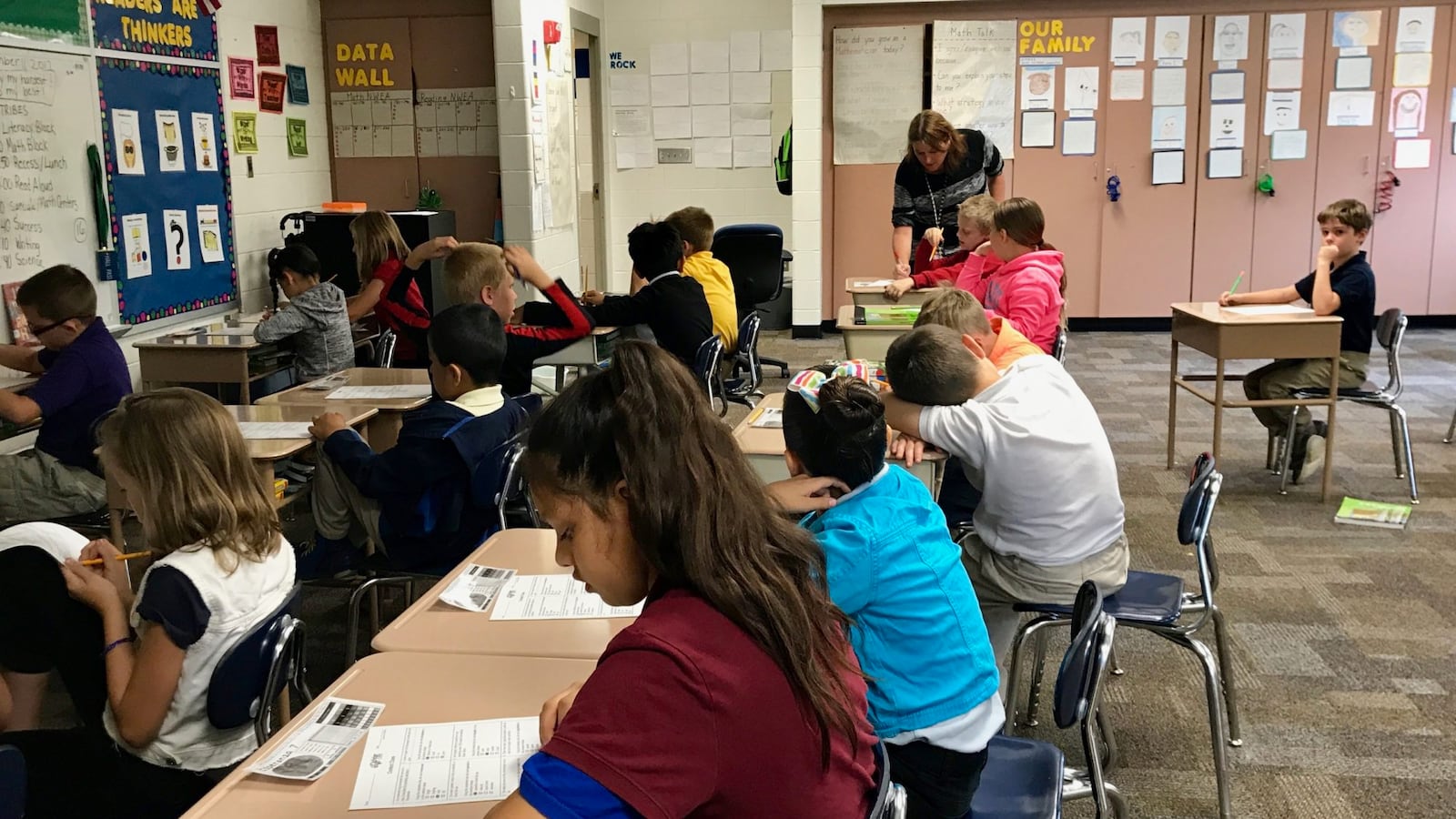Correction: Feb. 28, 2019: An earlier version of this story incorrectly stated that Indianapolis Public Schools projects a deficit next year. Proceeds from a property tax referendum approved by voters will cover what otherwise would be a deficit.
An influx of money from Indianapolis Public Schools taxpayers will allow the district to operate without a deficit next year. But in order to spend money on commitments such as boosting teacher pay, the district is still anticipating cuts going forward.
The school system’s financial picture is slightly rosier than expected because of reduced transportation costs and budget cuts made last year — and extra money from taxpayers.
That means the district still has a few years to plan further, painful cuts to its budget. Those likely include closing some local schools.
But those cuts can’t be put off long-term. If the district invests in priorities such as teacher pay increases without making cuts, its primary funds would be exhausted by the 2022-23 school year, said Aleesia Johnson, the district’s interim superintendent.
“We are ahead of the game as it relates to our saving target,” Johnson said, but noted, “we still have some decisions to make to make sure we stay in a sustainable place financially.”
In November, Indianapolis Public Schools won overwhelming support from voters for a pair of referendums to raise property taxes to increase funding for education and to pay for building improvements. A measure to increase operating funds will give the district nearly $28 million per year for the next eight years. Even so, that’s less than a third of what the school board had originally sought from taxpayers.
The district drastically lowered its earlier requests in a bid to win the support of business leaders, and it agreed to an ongoing partnership with the Indy Chamber to bring down district operating costs.
The district is already seeing some savings. Costs for transportation are significantly lower than anticipated, said Weston Young, the district’s chief financial manager. A new bus schedule and improved bus routes have made a difference. In addition, the cost of busing students to whichever high schools they choose was also lower than expected, he said.
The district also lowered spending with cuts, announced last spring, Young said. Those cuts affected school budgets and central services, such as administrators, substitute teachers, and custodial services.
The savings are offset by the district’s recent costly commitment to give raises to teachers and to other district workers, such as administrators, custodians, and food service workers.
The district’s financial position could change depending on how much money it receives from the state. A budget proposal from Republicans in the Indiana House would boost funding for every district in Indianapolis. Under that proposal, Indianapolis Public Schools per-student funding from the state would go up more than 3 percent to $8,029 from $7,764.
Johnson said that while that while that plan looks “friendly” to Indianapolis Public Schools, she is withholding judgment. “There are different moving parts in that budget, so we are sort of taking a wait and see approach,” she said.

